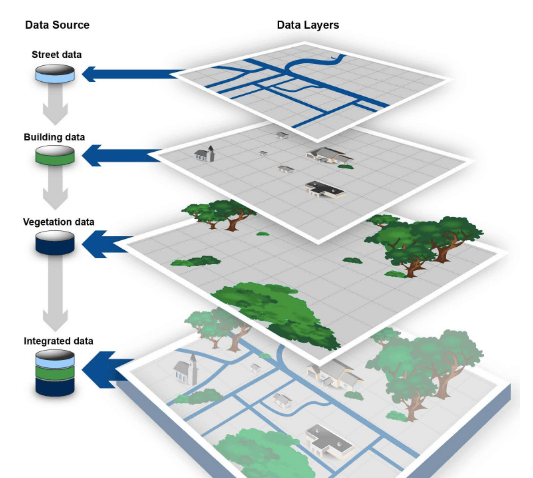Investing in a great idea is partly trusting the people who either came up with the technology that makes it possible for calculated investment and believe it’s the right time for this tech to hit the streets. Well, before the idea comes to the concept itself. You can’t go to the bank, tell them that you want to get out all your money and pile in a big heap then start throwing it people. Investments cannot be like throwing a dart at a map and hoping for the best…or can they?
Employing a geographic information system in your decision making gives you waves and waves of information. Also known as a GIS, this technology breaks down a real-world area in layers to show you just what exactly is attractive about a location. Looking over an area that looks normal to the eyes, and then with a GIS is a world of difference. You get information about how many people are living in a certain zone, what kinds of businesses are situated inside, the traffic flow and the sophistication of the public transport etc.
Photo by U.S. Government Accountability Office
A buzzing town/city
With the structured analysis that a GIS provides, your eye for investment can spot tactical advantages. A city or town and its boroughs can be broken down methodically. Study the landscape and figure out what kind of heavy transport options are in the area if you want to import products. The system will provide you with a map of the trains, shipping, and aircraft that come and go as well as their frequency of arrivals and departures, their size and capabilities.
Next, you can see the streets clear, the elevation of those different roads and streets such as mountainous terrain and or flat land. Potential customers are much better understood by a GIS because you can accurately guess their income levels by studying the value of real estate and the population figures. This way you can see whether or not a town or city is buzzing with middle-class consumers.
Population needs must
Deciding what kinds of companies and businesses you want to invest in once you have an avalanche of information about the contents of their location is still difficult, to say the least. Small businesses are of course the obvious choice you might say as locals are much more likely to interact with them on a daily basis. But what else does any thriving city or town need?
Good healthcare is becoming more and more important to people as the quality of life improves. Investing in a company that employees a GIS in its operations is a very good sign. Talk to somebody like Chris Pivik to see just how private equity firms use a GIS in their healthcare sector investments. Making smart investments for you in managed care spaces, he can sift through the companies that really plan for the future and make good internal business decisions to make profits while maintaining focus on patients too.
A GIS is like a bird’s eye view of a location and all that resides within it. Breaking down the layers and layers of information gives you the opportunity to act with a tactical approach.

